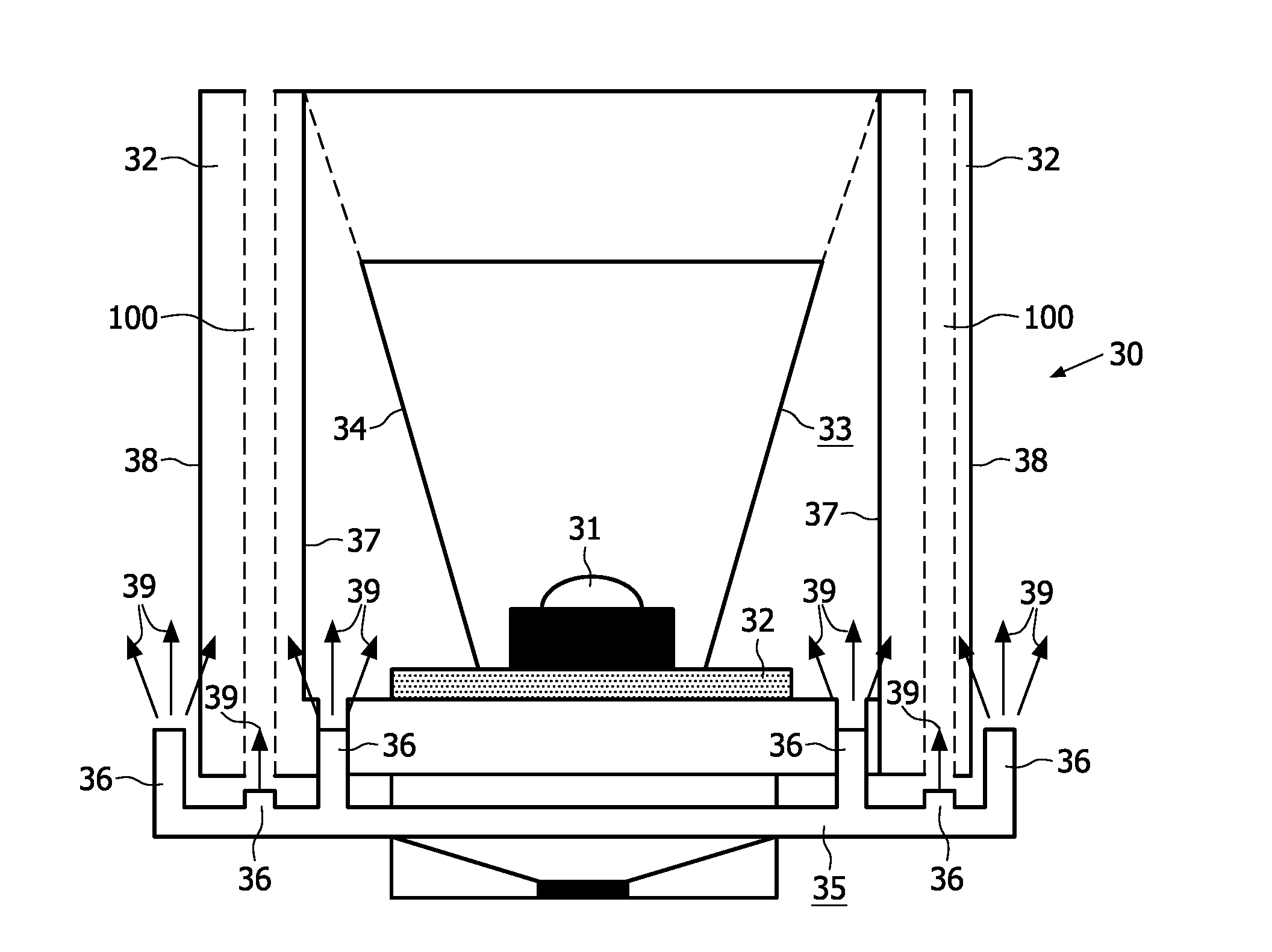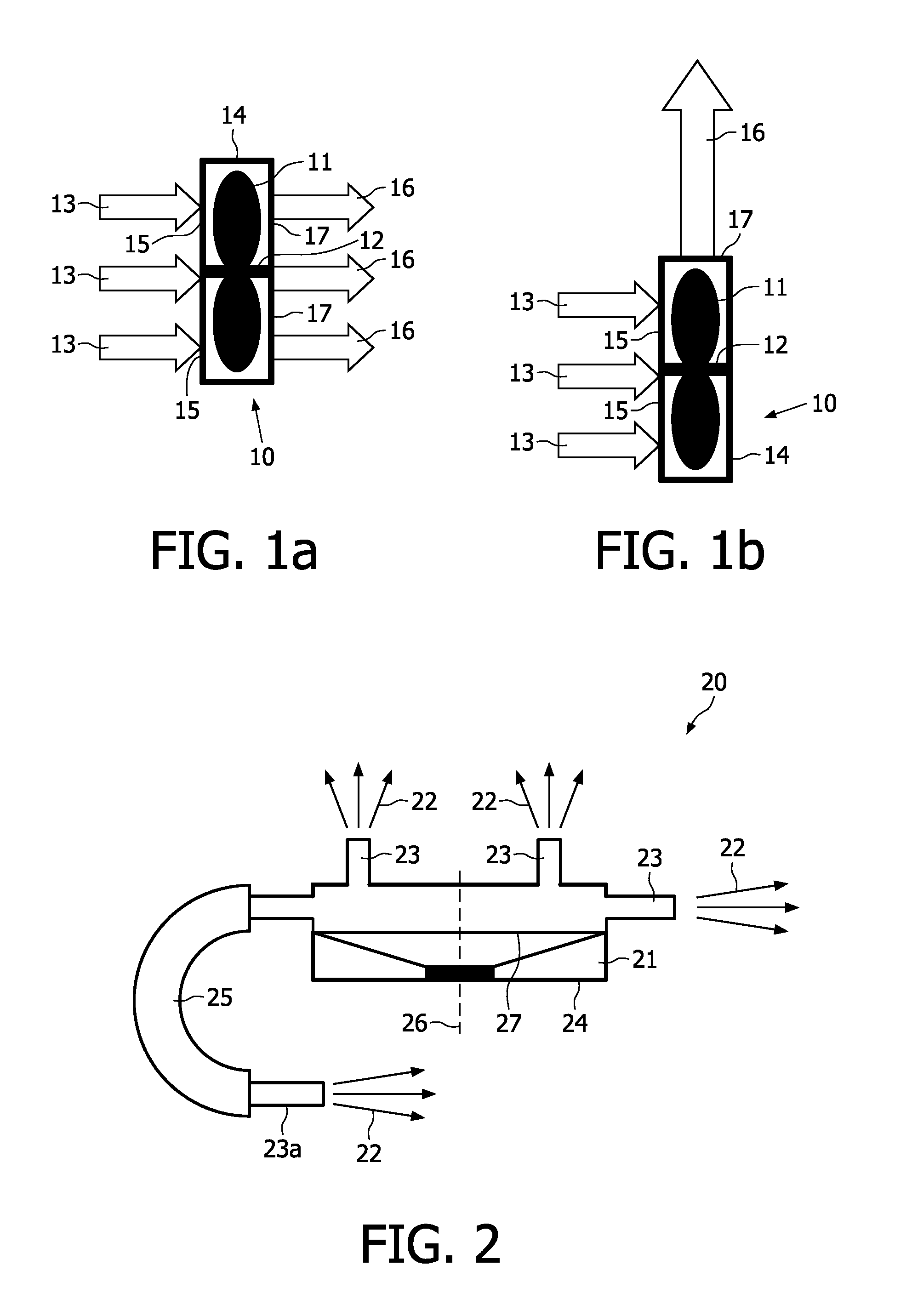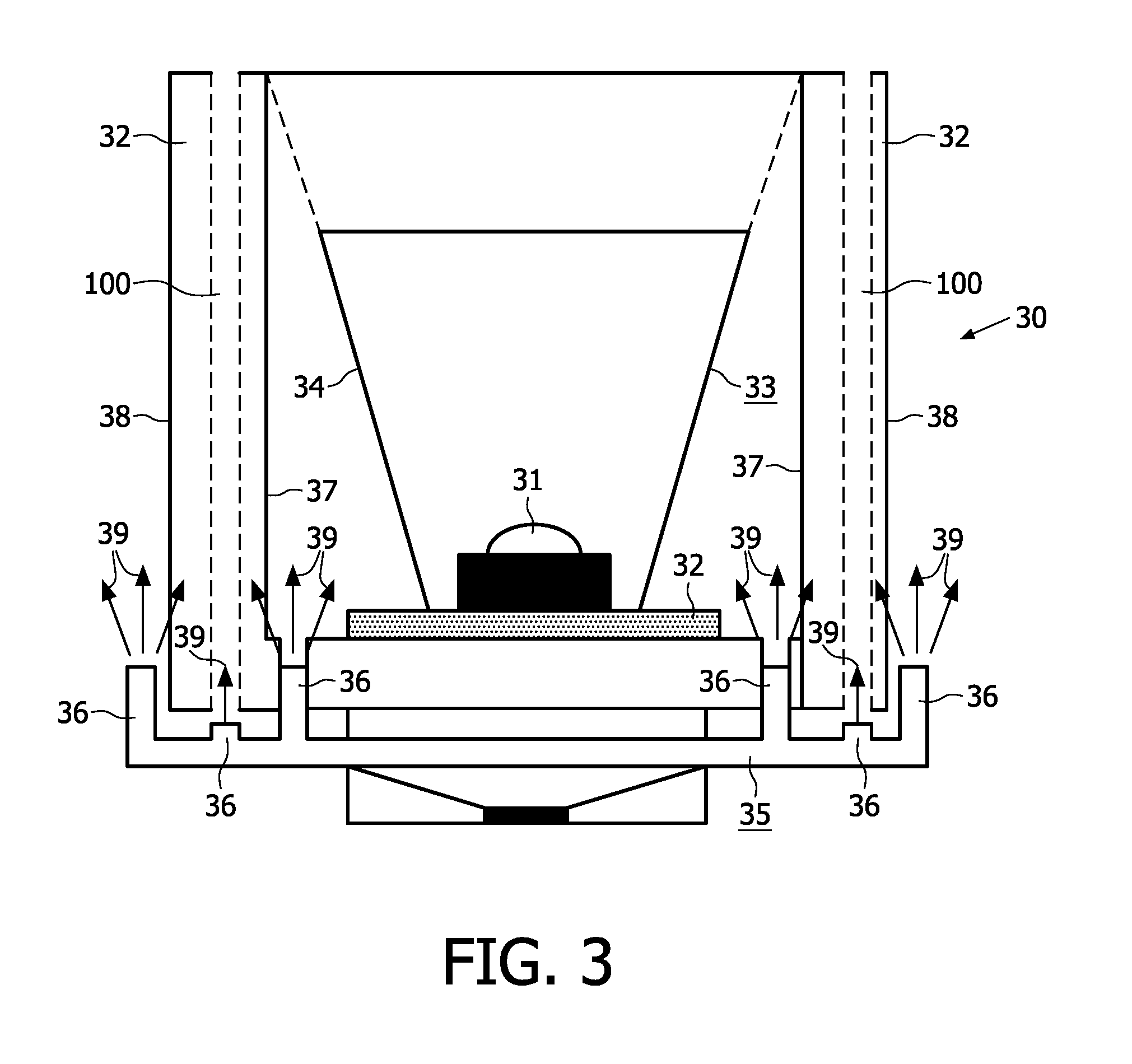Lighting device
a technology of light source and fan, which is applied in the direction of semiconductor devices for light sources, semiconductor/solid-state device details, lighting and heating apparatus, etc., can solve the problems of reducing the cooling effect of the fan, affecting the cooling effect, and consuming a lot of energy, so as to achieve less energy input, improve the cooling effect, and more cooling
- Summary
- Abstract
- Description
- Claims
- Application Information
AI Technical Summary
Benefits of technology
Problems solved by technology
Method used
Image
Examples
first embodiment
[0029]FIG. 3 is a schematic view of a lighting device 30 according to the invention. The lighting device comprises a light source 31, in the Figure a compact high-pressure mercury vapor discharge lamp, for example, a UHP lamp. The light source is mounted on a heat sink 32 and further comprises optical means 33, in the Figure a parabolic reflector 33. The heat sink substantially has a shape which is similar to an outer contour 34 of the reflector. A vibrating membrane cooling device 35, in the Figure a resonant cooling system analogous to the one shown in FIG. 2, is provided adjacent the heat sink. The device 35 has six orifices 36 that flush the heat sink with a sequence of fluid pulses 39 which, once out of the orifice, become a turbulent fluid flow, both on its inner 37 and outer contour / side 38. Furthermore, the heat sink comprises channels 100 into which fluid pulses 39 are supplied via respective cooling openings 36. As a result of the overall cooling of the heat sink, the ligh...
second embodiment
[0030]FIG. 4 is a schematic view of a lighting device 30 according to the invention. In this embodiment, the light source, in the Figure a part 42 comprising a white LED 31, optical means 33 and heat sink 32 is remote from a chamber 40 which forms part of the vibrating membrane cooling device 35. The fluid pulse sequence, in the Figure the fluid is air, is generated in the chamber and transported via an air pulse conductor 41 to the heat sink which is effectively cooled thereby. In this embodiment, the chamber has only one orifice 43. In an alternative arrangement (not shown), the remote part 42 is suspended via the air pulse conductor to a (false) ceiling and the chamber is tucked away in the ceiling or behind the false ceiling.
third embodiment
[0031]FIG. 5 is a diagrammatic view of a lighting device according to the invention, in which the chamber 40 is positioned inside the heat sink 32. This has the advantage that the lighting device takes up even less space and allows an aesthetic design. In this embodiment, there are three orifices / cooling openings 43.
PUM
 Login to View More
Login to View More Abstract
Description
Claims
Application Information
 Login to View More
Login to View More - R&D
- Intellectual Property
- Life Sciences
- Materials
- Tech Scout
- Unparalleled Data Quality
- Higher Quality Content
- 60% Fewer Hallucinations
Browse by: Latest US Patents, China's latest patents, Technical Efficacy Thesaurus, Application Domain, Technology Topic, Popular Technical Reports.
© 2025 PatSnap. All rights reserved.Legal|Privacy policy|Modern Slavery Act Transparency Statement|Sitemap|About US| Contact US: help@patsnap.com



